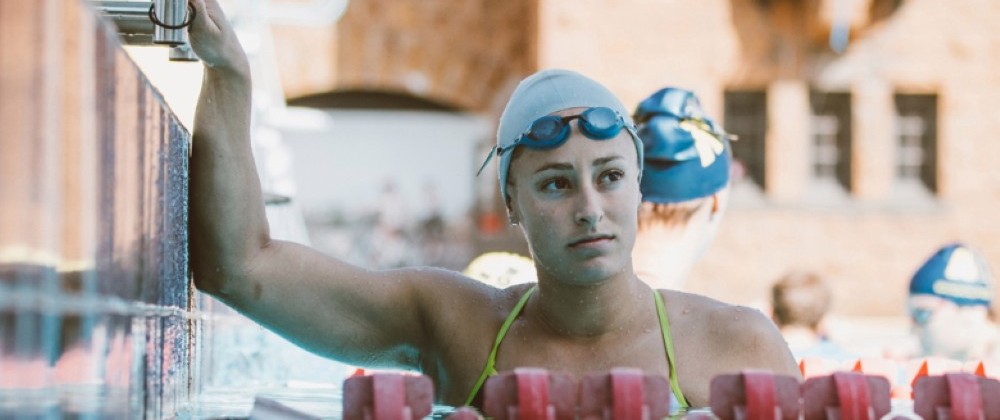Nadia, Butterfly

A remarkable new Québécois/Canadian film, Nadia, Butterfly is in general release in Québec, with an English sub-titled version showing at the Cineplex Forum in Montreal. Directed by Pascal Plante, who was himself a competitive swimmer, this work of fiction follows Nadia Beaudry during her last few days as a butterfly swimmer at the 2020 Tokyo Olympics. Ironically, the games have been postponed until 2021, while Plante shot his film in Tokyo and Montreal in 2019. Beaudry is played by Katerine Savard who won a bronze medal at the Rio Olympics on the Canadian 4×200 meters freestyle relay having switched from her preferred butterfly stroke, which had provided her with many medals and national records. (She still holds the Canadian 100m butterfly short course record, set in 2016.) Remarkably, the other three members of the fictional, women’s medley relay team were played by competitive swimmers, including Nadia’s best friend, Marie-Pierre (Ariane Mainville). Clearly, Plante chose his cast in the interests of authenticity (even the swim team’s massage therapist), and the lateral tracking camera shots of Nadia and other swimmers are both beautiful and viscerally exciting. The director wisely chose a woman, Stéphanie Anne Weber Biron to be his cinematographer because much of the film is extremely intimate, and there are only a very few shots —points-of-view through windows, a view of national flags— where Savard is out of the frame. One way in which Nadia, Butterfly is an exceptionally original film is that it combines a realist approach —a Canadian tradition since the 1960s when the National Film Board (NFB)/Office National du Film (ONF) started making fictional films— with an up-close and personal physicality and emotionality. Cleverly, the shots of the Olympic pool render the backgrounds out-of-focus so that we cannot notice to what degree how many real people are in the crowd (if any). Almost all of the indoor scenes were filmed in a Montreal studio, or swimming pool.
The races are incredibly intense, and it is not only these scenes that show off the fine physiques of the young performers. The night after their last race, when Nadia and Marie-Pierre go on a binge fling, is highly charged physically and sexually. The film is a roller coaster ride of emotions, and is so believable in its representation of the rigorous regimen suffered by semi-professional young athletes who devote decades to perhaps winning an Olympic medal. Most impressively though, are the performances of the female swimmers who are to some degree playing themselves, especially Beaudry, who is so often silent and alone. Although we are moved by her passionate responses of joy, anger, amusement, etc., ultimately, I was impressed by both the naturalness and subtlety of her facial expressions, such that we don’t know if she will actually retire from swimming to pursue her goal of becoming a medical doctor or not. As a sports fan, I am always disappointed by fiction feature sports films —there are many fine sports documentaries— and the only other one that I remember admiring as much as Nadia, Butterfly, is Jafar Panahi’s Offside (Iran, 2006), where young Iranian women try to get into a stadium, illegally, to watch the national men’s football team. At the screening I attended both Plante and co-producer Dominique Dussault graciously hosted a q&a session after it. (In praising their film following the discussion, I mistakenly identified Abbas Kiarostami as the director of Offside – sorry about that!) Go see Nadia, Butterfly soon, since Canadian films rarely last more than two or three weeks, and sit as close to the screen as possible to better appreciate its narrower than usual aspect ratio (1.50:1) which enhances the proximity of the action, and to get caught up in the excitement of it, and all of Nadia’s moods.










